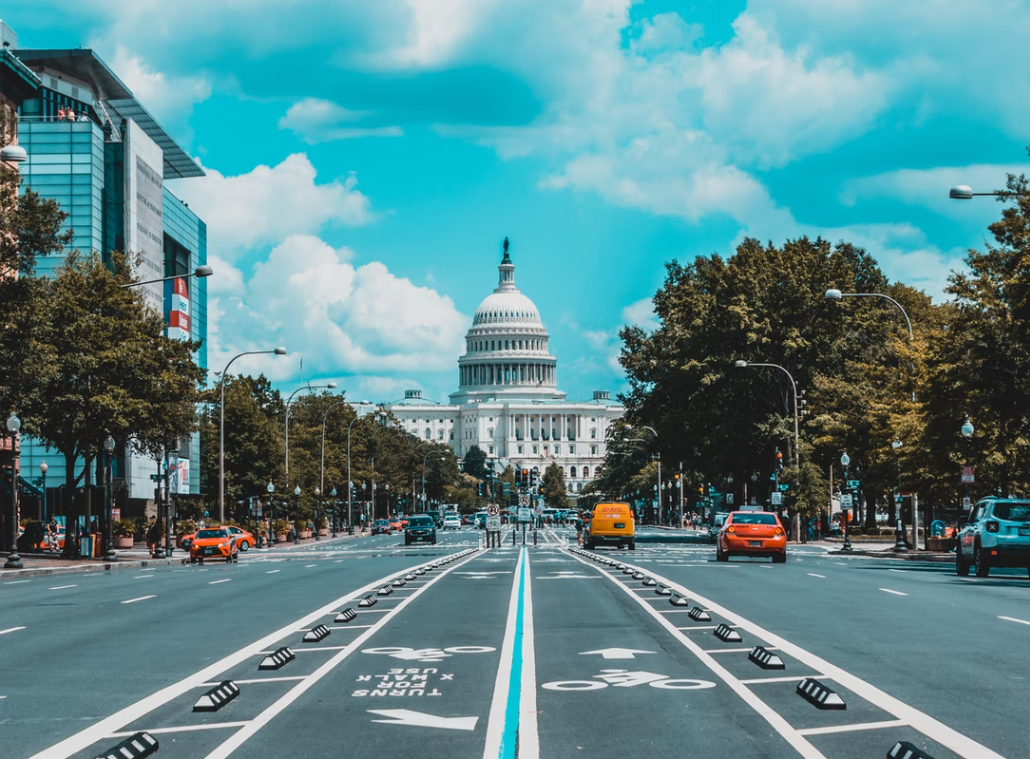
Yesterday, the United States Senate passed the Inflation Reduction Act (IRA) and made history by authorizing the largest federal investment in U.S. climate action on record. Despite its tumultuous journey to the Senate floor, this groundbreaking piece of legislation will unlock $369 billion dollars in clean energy programs and subsidies, and building electrification is slated to receive substantial support. The IRA, assuming it makes its way to the President’s desk, will be the galvanizing force needed to transition the U.S. buildings stock from fossil fuels to electricity. Let’s dive into some of the most important household energy rebate and tax incentive programs included in the bill. Given residential buildings make up the vast majority of the built environment, we’ve chosen to focus on that subsection of the buildings stock for this analysis.
We’ll start with the Energy Efficient Home Improvement Credit, which is a 10-year expansion and amplification of the expired non-business energy property tax credit (Section 13301). The credit provides households up to $600 to upgrade their breaker box or make weatherization/insulation improvements, and as much as $2,000 for heat pumps or heat pump water heaters (purchase and installation costs). Note that this funding only covers up to 30 percent of the total upgrade cost, so if your appliance costs $2,500, you’d only get $750 back. In addition, this credit offering provides households with a maximum $150 incentive to cover the costs of a home energy audit.
|
Another important modification built into this credit is that taxpayers can now apply for the incentive on an annual basis through 2032, replacing the “lifetime” maximum limitation previously attached to the nonbusiness energy property credit. This credit structure therefore enables households to stagger electrification projects and provides more flexible opportunities to plan upgrades over a number of years. |
|
As a great relief to those looking to invest in household electrification over the coming years, the IRA extends the soon-to-be expired Residential Clean Energy Credit (Section 13302) through the end of 2032, with a 30 percent investment-based tax incentive available for 10 years. The credit will then phase down to 26 percent in 2032 and 22 percent in 2034, after which it will expire. Qualified energy property includes: geothermal heat pumps, solar PV, solar water heating, and for the first time, home battery storage. |
|
Likewise, the IRA extends the recently expired 45L New Energy Efficient Home tax credit through 2032 and provides developers with a maximum $2,500 incentive for constructing new single-family, multi-family, or manufactured homes that meet specific ENERGYSTAR requirements (Section 13304). A higher-tier credit of $5,000 is available to those who build property designated as “zero-energy ready” by the U.S. Department of Energy. |
|
Next, we have the High Efficiency Electric Home Rebate Program (Section 50122), which authorizes a whopping $4.5 billion for household electric appliance rebates. This program specifically targets low- and moderate-income (LMI) households and LMI-occupied multifamily properties. As an important note, these rebates will cover 100 percent of the total project costs for qualifying low-income households, up to the upgrade-specific funding cap. The chart below provides a breakdown of the program rebates by upgrade type. Note that “moderate-income” households can also apply for these rebates, albeit capped at 50 percent of the total upgrade cost. A single entity can apply for a maximum of $14,000 in rebates through this program, but cannot stack funds with other federal or state grants/rebates for use on the same electrification project. |
Figure 1: HEEHPR Rebates by Upgrade Type

Source: Inflation Reduction Act, Section 50122; Atlas Buildings Hub
|
The other major rebate program for household building electrification under IRA is known as HOMES (Section 50121). Through the HOMES program, Congress has made $4.3 billion available through 2031 for “comprehensive home energy retrofits.” Note that HOMES does include upgrades for fossil fuel appliances, not just electric ones. However, qualifying natural gas or oil appliances are required to be substantially more efficient than what they replace, which does reduce pollution, emissions, and energy consumption, albeit by a smaller amount. |
|
The amount single-family homeowners, multi-family building owners, and LMI-occupied properties receive from HOMES is based on modeled energy savings resulting from the planned upgrade(s), which can fall into one of three tiers: 15-20 percent, 20-35 percent, and greater than 35 percent savings on kWh or kWh-equivalent basis. |
Figure 2: Maximum HOMES Rebates by Modeled Energy Savings Percent and Occupant Type

Source: Inflation Reduction Act, Section 50121; Atlas Buildings Hub
|
So, will these programs make a dent? Well, according to a Consumer Reports survey, the median price for the purchase and installation of a ducted air-source heat pump between 2016 and 2021 was just shy of $8,000. And Carbon Switch’s favorite heat pump water heater can be purchased for just $1,699. Therefore, we can give an emphatic yes – IRA rebates will indeed cover a huge portion of electrification costs. And beyond those programs and incentives listed above, several others developed and expanded in the IRA will facilitate the electrification of commercial, public, and Tribal buildings as well. |
|
From the 30,000-foot view, the IRA represents an unprecedented opportunity for property owners across the United States to make their buildings healthier, greener, and more efficient. |



